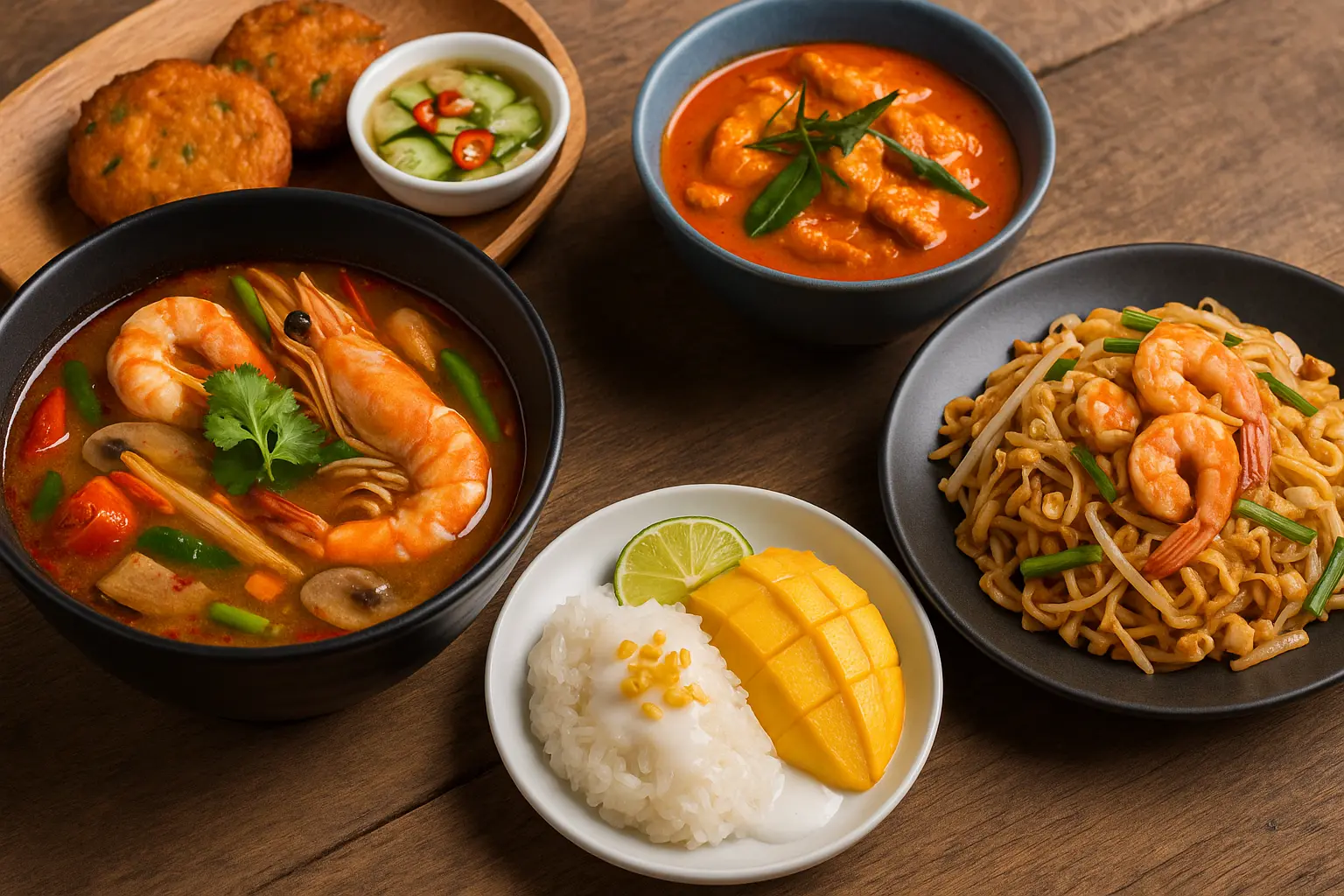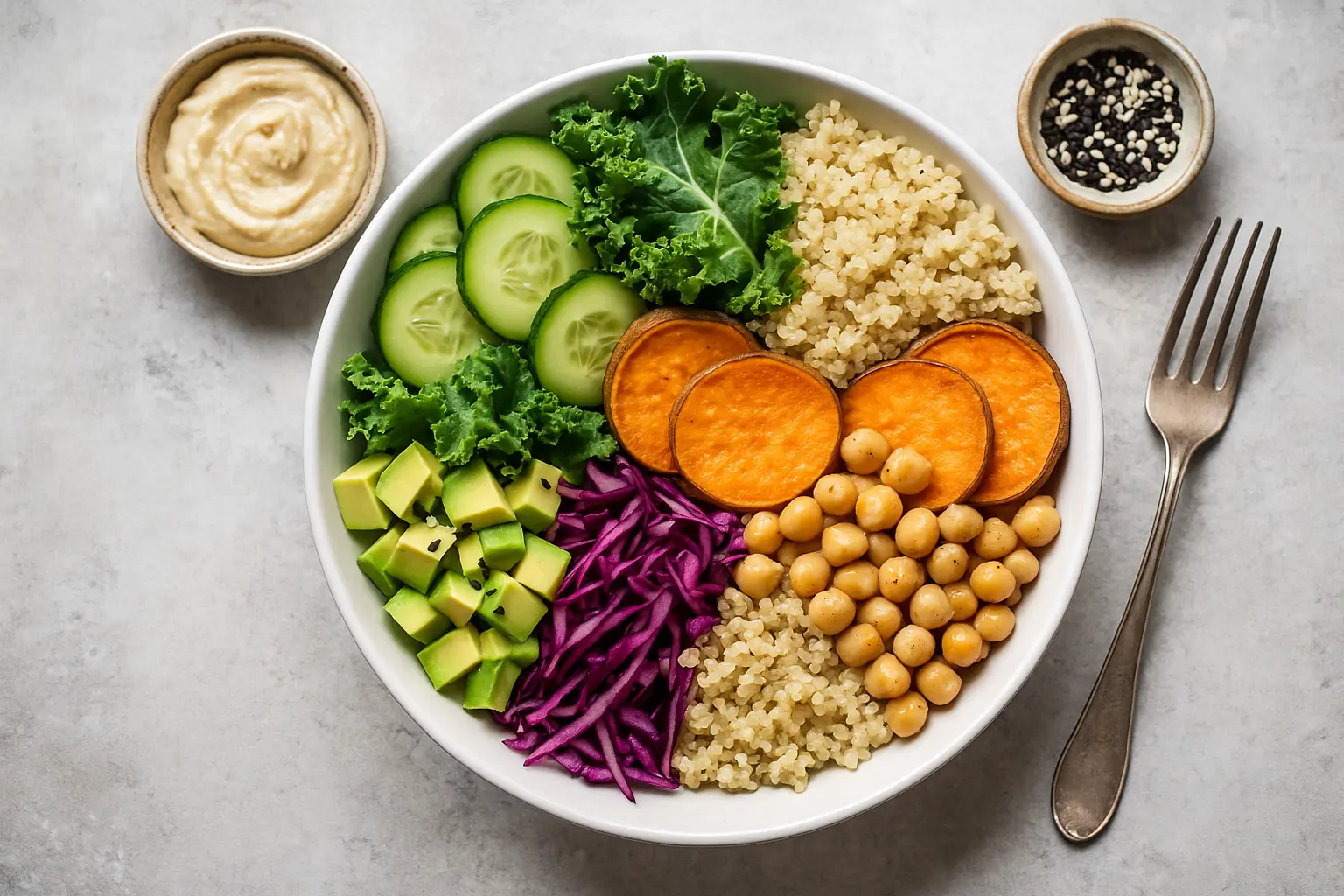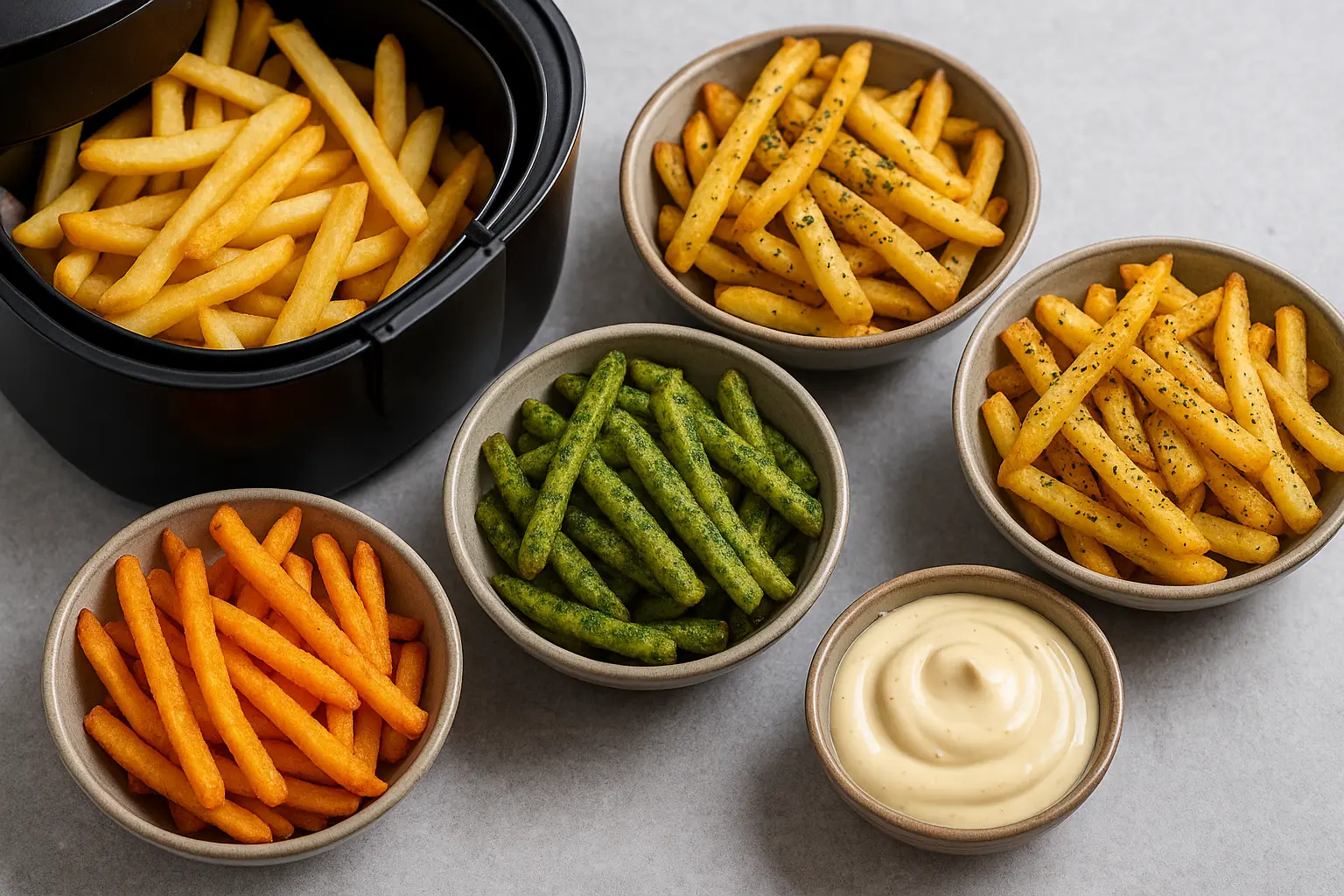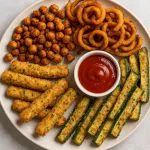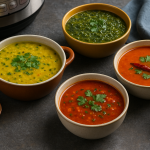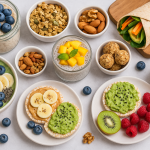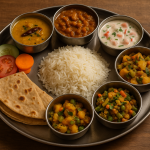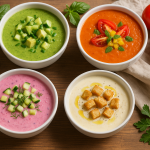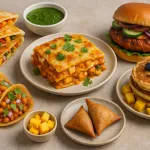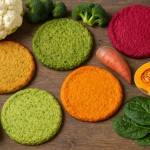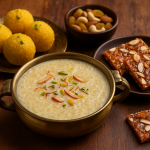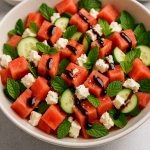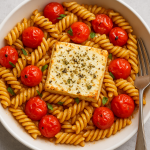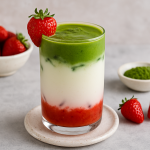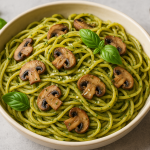Thai Recipes That Balance Sweet, Salty, Spicy & Sour
When it comes to bold, irresistible flavour, few cuisines in the world rival Thai food. With a perfectly calibrated balance of sweet, salty, spicy, and sour, Thai cooking is both an art and a science — one that transforms the simplest ingredients into explosive culinary experiences. Whether you're a beginner looking to make your first Pad Thai or an adventurous cook ready to grind your own curry paste, this blog is your full-flavour guide to authentic Thai recipes.
🥢 The Magic of Thai Flavour Balance
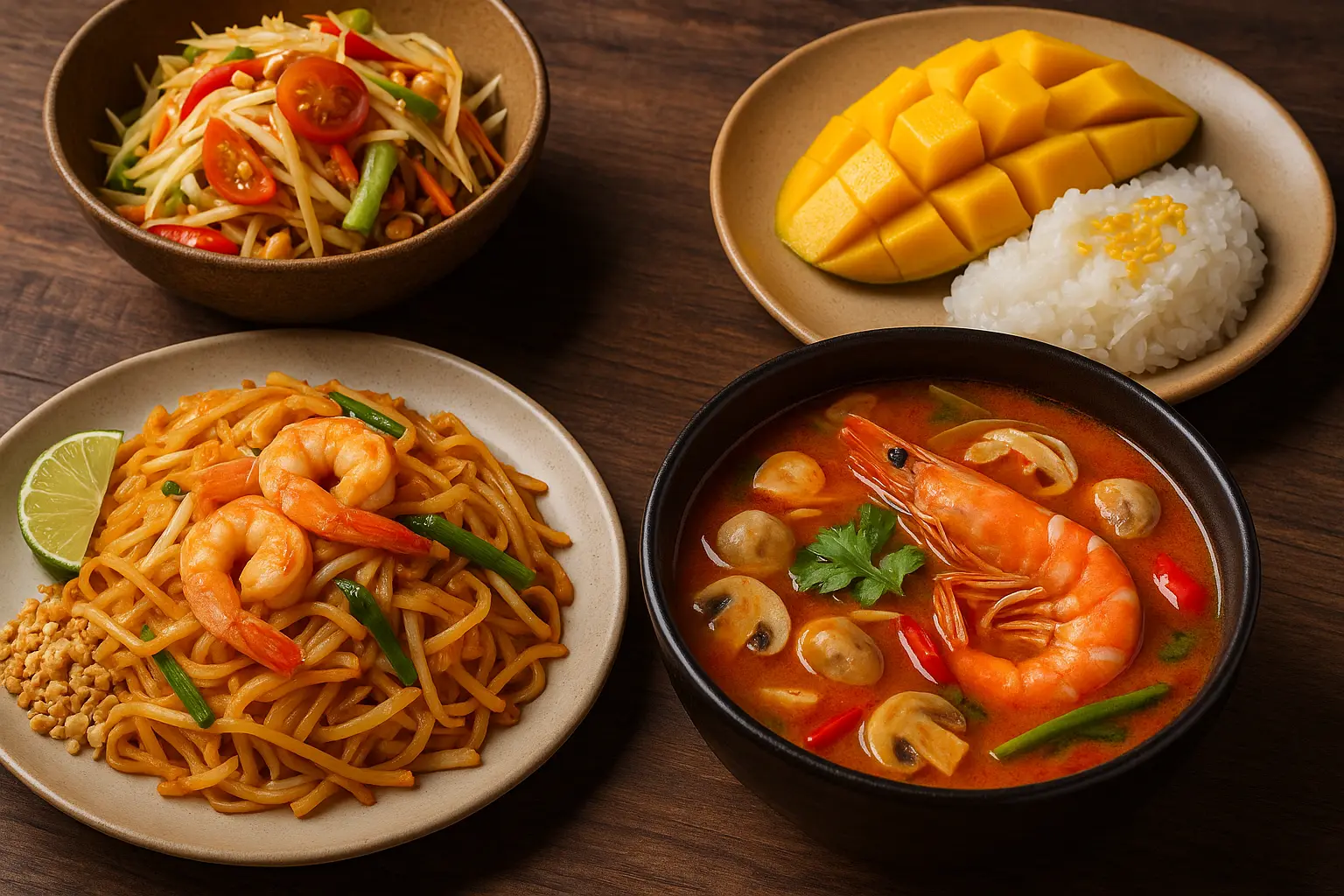
In Thai cuisine, flavour balance isn’t optional — it’s essential. Unlike Western cuisines that often isolate sweetness or spice, Thai food is built around layering and contrasting:
Sweet – Comes from palm sugar, coconut milk, fruits, and even roasted vegetables.
Salty – Delivered through fish sauce, soy sauce, and fermented pastes.
Spicy – Often from bird’s eye chillies, curry pastes, or chilli oil.
Sour – Brought in through lime juice, tamarind, green mango, or vinegar.
What makes Thai food so addictive is this dance between the flavour pillars — each dish sings with harmony and depth.
🍲 Must-Try Thai Recipes with Perfect Flavour Balance
Here’s a curated list of Thai dishes that master the four-flavour principle. You’ll find everything from street food staples to dinner table favourites.
1. Tom Yum Goong (Hot & Sour Shrimp Soup)
Flavour profile: Spicy, sour, savoury
Key ingredients: Lemongrass, galangal, kaffir lime leaves, prawns, chilli paste, lime juice
Tom Yum Goong is Thailand in a bowl — brimming with fiery spice, lip-smacking sourness, and the umami punch of seafood. The use of aromatics like galangal and kaffir lime sets it apart from other soups. It’s light, yet flavour-packed, and is often served with jasmine rice or as a starter.
2. Som Tum (Green Papaya Salad)
Flavour profile: Sweet, sour, spicy, salty
Key ingredients: Green papaya, peanuts, palm sugar, fish sauce, lime, chillies, tomatoes
Som Tum is a crunchy, zesty Thai salad that punches above its weight in flavour. Grated green papaya is pounded in a mortar and pestle with all the essentials, resulting in a refreshing yet fiery dish. It’s especially popular in Northeastern Thai cuisine and is often eaten with sticky rice and grilled meats.
3. Pad Thai (Thai Stir-Fried Noodles)
Flavour profile: Sweet, tangy, salty, umami
Key ingredients: Rice noodles, tamarind paste, fish sauce, palm sugar, eggs, tofu/shrimp, peanuts
Pad Thai is Thailand’s most iconic export — a symphony of textures and taste. What sets a great Pad Thai apart is the balance of tamarind sourness with palm sugar sweetness and savoury depth from fish sauce. Garnished with crushed peanuts, bean sprouts, and lime wedges, it’s both street-smart and restaurant-ready.
4. Panang Curry with Chicken
Flavour profile: Creamy, sweet, spicy, salty
Key ingredients: Panang curry paste, coconut milk, kaffir lime, chicken, fish sauce, palm sugar
Unlike other Thai curries, Panang is thicker, creamier, and subtly sweet. It uses less broth and more coconut milk, giving it a luxurious consistency. Often made with chicken or beef, the curry is rich but not overwhelming, and best served with hot jasmine rice.
5. Pad Krapow Moo (Thai Basil Pork Stir-Fry)
Flavour profile: Spicy, salty, slightly sweet
Key ingredients: Minced pork, garlic, chillies, Thai holy basil, oyster sauce, soy sauce
Pad Krapow is everyday Thai comfort food — bold, fast, and deeply satisfying. It’s cooked on high heat for a smoky, wok-charred effect and served with rice and a crispy fried egg. The kick of chilli pairs perfectly with the herbaceous bite of Thai basil.
6. Massaman Curry (Southern Thai Muslim Curry)
Flavour profile: Sweet, mild, creamy, nutty
Key ingredients: Massaman curry paste, beef, coconut milk, potatoes, roasted peanuts
Massaman Curry is Thailand’s version of a slow-cooked stew — influenced by Indian and Persian cuisines. This dish is milder than red or green curry but boasts incredible complexity. Spices like cinnamon and cardamom add warmth, while the richness of coconut and peanuts wraps everything in comfort.
7. Thai Grilled Chicken (Gai Yang)
Flavour profile: Smoky, savoury, slightly sweet
Key ingredients: Chicken, garlic, coriander root, fish sauce, soy sauce, sugar
Gai Yang is a classic Thai street food often sold roadside with dipping sauces and sticky rice. The marinade infuses the meat overnight with deep, bold flavours, and grilling over charcoal gives it irresistible smokiness. It’s the Thai version of BBQ perfection.
8. Nam Tok (Waterfall Beef Salad)
Flavour profile: Tangy, spicy, umami
Key ingredients: Grilled beef, toasted rice powder, lime juice, fish sauce, chillies, mint
Nam Tok combines grilled steak slices with a dressing that’s tangy, savoury, and mouthwateringly spicy. The toasted rice powder adds a nutty crunch, making this a textural delight. Often served with sticky rice, it’s a protein-rich dish ideal for low-carb or gluten-free diets.
9. Thai Mango Sticky Rice (Khao Niew Mamuang)
Flavour profile: Sweet, creamy, slightly salty
Key ingredients: Mango, glutinous rice, coconut milk, palm sugar, salt
No Thai meal is complete without dessert, and mango sticky rice is a standout. Creamy coconut-infused sticky rice pairs with juicy ripe mangoes and a pinch of salt for contrast. It’s summer in a bite — and wildly popular across Thai restaurants worldwide.
10. Thai Fish Cakes (Tod Mun Pla)
Flavour profile: Spicy, savoury
Key ingredients: White fish, red curry paste, kaffir lime leaves, green beans
These chewy, flavourful fish patties are a staple Thai appetizer. They are often served with sweet chilli dipping sauce and cucumber relish, balancing heat with a refreshing crunch. Ideal for party platters or snacking with drinks.
🧂 Tips for Getting the Flavour Right in Thai Cooking
Even with a solid recipe, Thai cooking comes down to instinct and tasting as you go. Here are some essential tips:
Always use fresh herbs like coriander, mint, Thai basil, and kaffir lime leaves.
Balance acidity with lime juice or tamarind — not vinegar alone.
Don’t be shy with chillies — Thai food is meant to wake up your palate.
Fish sauce is king — it may smell intense, but it's the backbone of flavour.
Palm sugar > white sugar — it offers a rich caramel-like depth.
Use a mortar and pestle when you can — it releases deeper aromatics than a blender.
🛒 Pantry Essentials for Thai Cooking at Home
Stock your kitchen with these staples and you'll be ready to whip up Thai meals any time:
Fish sauce
Oyster sauce
Light & dark soy sauce
Tamarind paste
Palm sugar
Thai curry pastes (red, green, panang, massaman)
Coconut milk
Jasmine rice & sticky rice
Dried chillies
Kaffir lime leaves, lemongrass, galangal (frozen works too)
Thai basil or holy basil
Shrimp paste (optional but authentic)
🧘 Thai Cuisine for Special Diets
Thai cuisine is flexible and easily adaptable for various dietary needs:
Vegetarian/Vegan: Use tofu instead of meat, and substitute fish sauce with soy sauce + lime + miso or seaweed for umami.
Gluten-Free: Rice noodles and jasmine rice are naturally gluten-free. Just check sauces for wheat.
Dairy-Free: Most Thai recipes are naturally dairy-free thanks to coconut milk.
Low-Carb: Swap rice for cauliflower rice and use lean proteins with Thai herbs and sauces.
🌏 Cultural Significance of Thai Food
Thai food is deeply tied to community, ceremony, and regional identity. From the bold Isaan cuisine of the Northeast to the Muslim-inspired flavours of the South, every dish tells a story. Meals are meant to be shared, with multiple dishes hitting the table at once — creating a full-bodied flavour experience.
In Thai homes, food is also an expression of love and hospitality. Offering food to guests or monks, sharing with neighbours, and preparing family feasts are daily acts of generosity and togetherness.
🧑🍳 Final Word: Cooking Thai Is Easier Than You Think
Don’t be intimidated by the idea of Thai cooking. With the right ingredients and a focus on balance, you can master these dishes right in your own kitchen. Thai recipes are more than just meals — they’re vibrant expressions of taste, tradition, and togetherness.
Whether you're craving something spicy like Pad Krapow or a sweet ending with mango sticky rice, these recipes are a gateway to an unforgettable home-cooked experience.
Leave a comment
Your email address will not be published. Required fields are marked *


